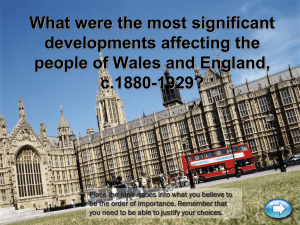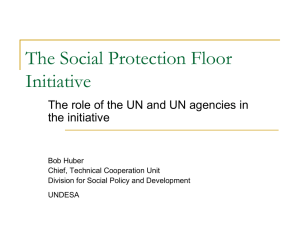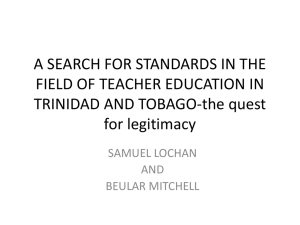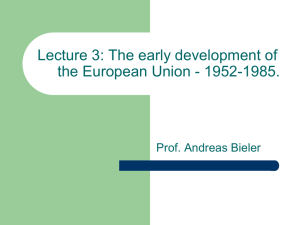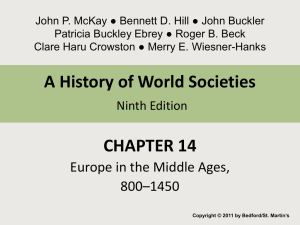Integrating macro-economic developments and land use allocations
advertisement
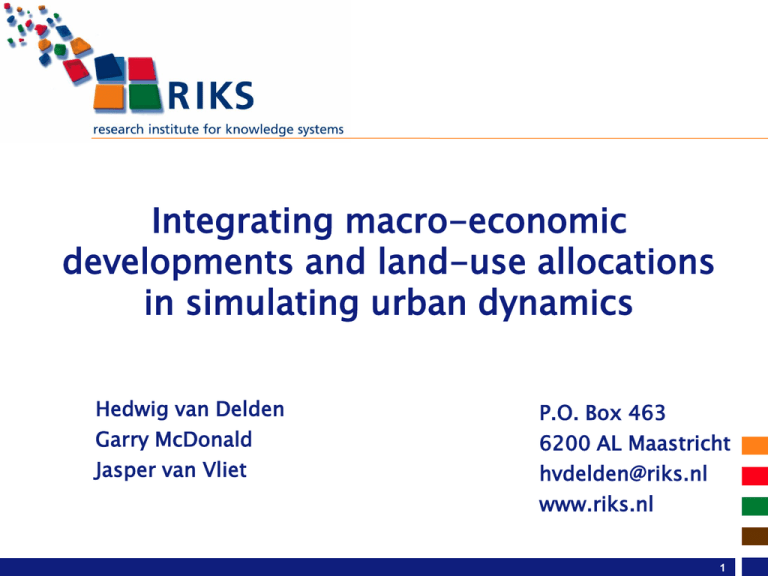
Integrating macro-economic developments and land-use allocations in simulating urban dynamics Hedwig van Delden P.O. Box 463 Garry McDonald 6200 AL Maastricht hvdelden@riks.nl Jasper van Vliet www.riks.nl 1 Research context Two research projects in New Zealand to develop and use spatial models for supporting planning processes policy impact assessment forecasting land-use developments application to a rural region: Waikato application to two urban regions: Auckland and Wellington 2 Land use change over time… Land use dynamics are complex and exhibit selforganising behaviour Planners and policy makers have a decisive influence on future land use Contradiction? Challenge! 3 Challenges Simulation of spatial developments over time Incorporation of a range of drivers Dynamics driven by processes operating on various scales Bottom-up and top-down interactions! Development of a system for policy support Useful system for policy analysts in supporting scenario studies and policy impact assessment Transparent system with access to data and parameters for technicians and modellers 4 Starting point… Metronamica land use model Constrained cellular automata based model Yearly time steps Time horizon 2025-2050 Spatial extent 100 x 100 km (Wellington) Spatial resolution 100 m (Wellington) 5 Land use Land use & interaction at weights time T+1 Stochastic perturbation Suitability & t & 0 Accessibility v 1 ln rand 0.5 1 Transition Rule Change cells to the land use for which they have the highest transition potential until Time Loop regional demands are met & Transition Potentials Zoning & = 6 How to obtain regional demands? Macro-economic model Input-output model Calculation of economic developments per sector taking into account the interdependencies between sectors Annual time step Demographic model Age cohort model Calculation of the population per age cohort based on birth, mortality and migration rates Annual time step 7 Integrating socio-economics and land use Demand side - Exports -… Demographic developments t-1 Supply side Final demand ($) Change in final demand ($) Output ($) Reduction in output ($) Conversion to land use demands (ha) Land use allocation Land that could not be allocated - Spatial planning - Suitability -… 8 Integrating macro-economics and land use Main benefit of using IO (or CGE) models is that the impact of land use can be analysed not only on one sector, but also on all other sectors Dynamic coupling between macro-economics and land-use change Impact of socio-economic growth on land use developments Impact of (limited) natural resources on economic development The concept of the economic model had to be stretched by calculating the demand in one year and the supply in another, not allowing an equilibrium in each year 9 Conclusions on the modelling approach Dynamic coupling between macro-economics and land use change Impact of socio-economic growth on land use developments Impact of (limited) natural resources on economic development Equilibrium approach of economic models often poses conceptual conflicts with the simulation approach of dynamic land use change models Being able to couple models technically doesn’t mean the coupling makes sense! For future research it is recommended to focus first on the integration of the processes and next on the model implementation 10 Thank you! hvdelden@riks.nl 11


